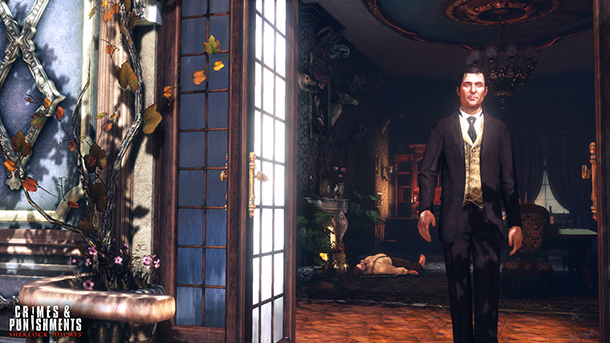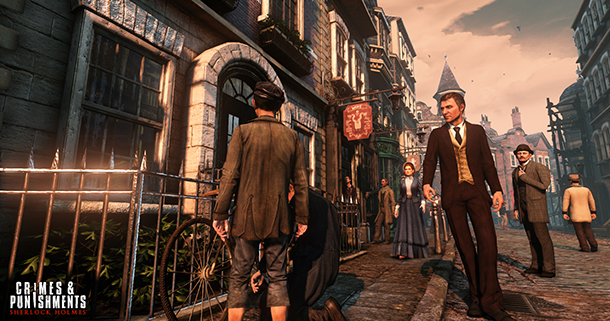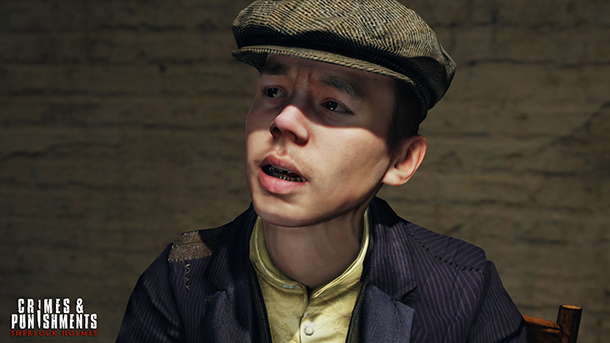
I’d never played any of the Sherlock games by Frogwares. I’ve never been a big fan of the character, and had only seen the recent films starring Robert Downey Jr. But I was always attracted to the games, interested in why the series has a growing following and surprisingly strong fanbase. With a new game on the horizon, Sherlock Holmes: Crimes and Punishments, and the fantastic BBC television series sinking it’s quills into me, I felt it was time to see what the Great Detective could bring to gaming that Professor Layton hadn’t already tackled.
After witnessing a hands-off demo presentation at E3 last week, I think I’m becoming a fan myself.
The video game Holmes has a lot to live up to. Benedict Cumberbatch’s modern version of the character is heralded as a defining version, and Robert Downey Jr’s interpretation shows the inner workings of the detective’s brain as situations play out. Crimes and Punishments‘ version aims to put players right into the mind of a mix of both versions. “We want you to feel like you’re actually Holmes, to be in his shoes, to figure things out how he figures things out,” designer Olga Chalovskaya told me during the demo. “He’s always thinking, and we want you to have the same abilities he does.”

One of those abilities is a sort of “Holmes Vision” that allows the player to scan a room, highlighting points of interest. In our demo, Chalovskaya guided Sherlock to the home of the murdered Black Peter, now a crime scene. As Holmes uses the ability, he’s able to discover that the dust on a shelf near the body seems to have a faint outline of a box. Something must have been taken, we deduce. Further evaluation of the home, which is nestled in a gorgeously rendered garden, shows us a suspicious knife and a blood-soaked journal which, by the location and angle of the blood, seems to have been dropped on the ground after the man was killed.
Another of the modern Holmes-style tropes that has seeped into the game was the character’s ability to slow down/stop time while examining suspects. This “scan” of people allows Holmes to notice scratches, broken skin, left- or right-handedness, and even details like what kind of watch a suspect is wearing. All of these bits of information are added to a deduction board in the detective’s office. Littered with clues, this is the place where he puts the puzzle pieces together, connecting every detail and note.

All of that seemed pretty engaging, but where I was thoroughly intrigued was the finale of each case. Based on the information at hand, Holmes has to make the conclusion whether to save or damn the suspects he’s facing, relying on the player’s moral choices to make that decision. Does he send the suspect to prison? Is he or she too young to go to jail, hopefully learning from their mistakes to improve their life? The choice has deep ramifications not only on the current case but others as well. It’s not something we see in the modern Holmes versions, where plots are generally tied up neatly by the detective.
Sherlock Holmes: Crimes and Punishments‘ focus on choices of morality, based on the amount of information that the players choose to get, should be enough to set this latest game apart from its series predecessors, and its integration of the modern Sherlock tropes may be enough to draw in new fans as well.
I know I’m listening now.
Sherlock Holmes: Crimes and Punishments arrives in 2014 for Xbox 360, PS3, and PC.

No Comments